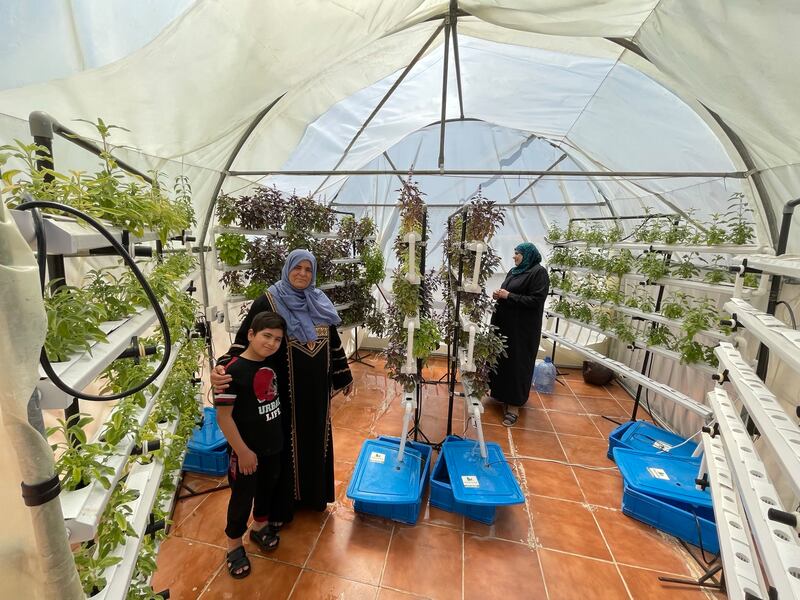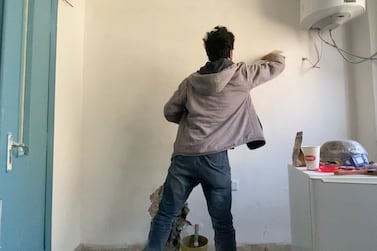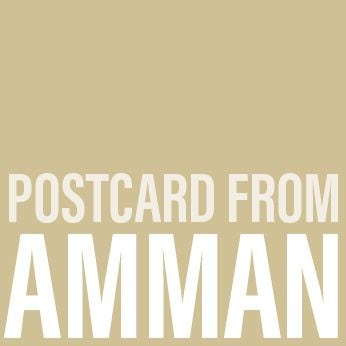
Before she fled her home in a Damascus suburb in 2014 to Jordan, Narjas Kilani rarely went to the market to buy produce.
Along with members of her family, she cultivated a half-acre piece of land near their building in Otaybah in Eastern Ghouta, an expanse of old farmland and urban centres east of Damascus.
“We were not farmers but agriculture is ingrained in the Ghouta society. We had a well and the land next to our home supplied us with almost everything,” said Ms Kilani.
Eastern Ghouta rose up days after peaceful demonstrations against five decades of Assad family rule broke out in southern Syria in March 2011. The revolt militarised after violent suppression by the regime and by the end of the year there was civil war.
Ms Kilani fled to Jordan with her four children shortly after Syrian security forces abducted her husband, an assistant engineer, when they were in a car stopped at a roadblock in Ghouta.
After her husband disappeared, Ms Kilani paid a smuggler to take her and her four children to Jordan.
She ended up living in a five-storey building in a modest neighbourhood in north Amman. The building houses 25 Syrian women, mostly widows, and their 80 children.
It is a microcosm of the human effects of the Syrian conflict — and of people quietly trying to help its victims in Jordan. Hundreds of thousands of Syrians have fled to the kingdom in the past decade.
German aid organisation Hilfe zur Selbsthilfe, which means Helping People Help Themselves, donated a drip irrigation system in the garden of the building and on the roof for residents to grow fruit and vegetables to feed themselves.
Since the system was installed in January, Ms Kilani has grown cabbage, aubergine, lemons and lettuce, as well as herbs such as melissa.
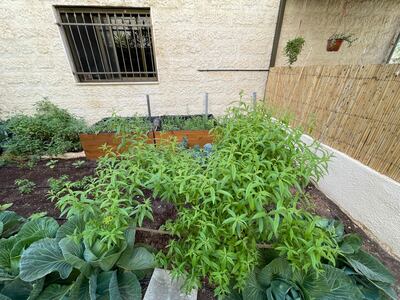
“The land is not as fertile as Ghouta and the produce takes more time to grow,” she said.
But the limited output helps lower the food bill for her and for the other women heads of households in the building.
Amman, like the rest of Jordan, is parched, with municipality water coming one day a week. Most of the green spaces surrounding buildings and homes are in more affluent parts of Amman and are grown mostly for decoration.
In the afternoon, the shadow of the building where Ms Kilani lives falls on the garden, hindering the growth of crop. On the roof, a plastic house has been installed. Mother-of-three Hiyam Saeed tends to an array of herbs.
In 2016 she fled Mheen, a village in central Syria to Jordan. Her husband died from an illness soon after they arrived. Before 2011, Mheen produced wheat and olive oil.
“An agricultural engineer showed us how to use the system and now we are familiar with it,” said Ms Saeed while tearing a basil leaf full of aroma.
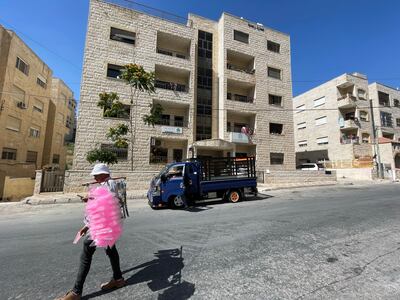
Although farming has been the mainstay of the economy since Jordan was founded in the 1920s, many who do the farming in Jordan now are from Egypt and South Asian countries.
Syrian teacher Nada Mohammad, who oversees activities in the building sponsored by charities, said the women in the building cannot go back to Syria because most of their homes have been destroyed, they have no money and the economy in their homeland has been destroyed.
“There is nothing to go back to,” said Ms Mohammad, who also teaches the children mathematics and chemistry.
At least two have gone on to Jordanian universities to study computer and nursing, financed by donations.
Others help differently. The building’s Jordanian owner charges below market rents, and Korean students studying Arabic at Jordan University stop by the building regularly to give children English lessons, Ms Mohammad said.
